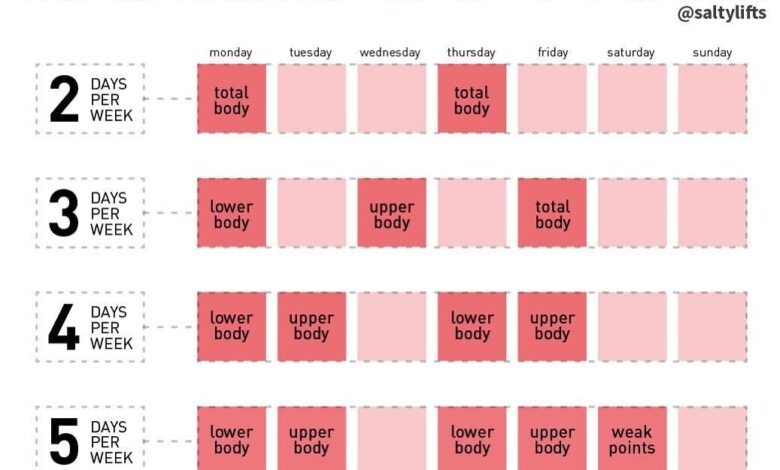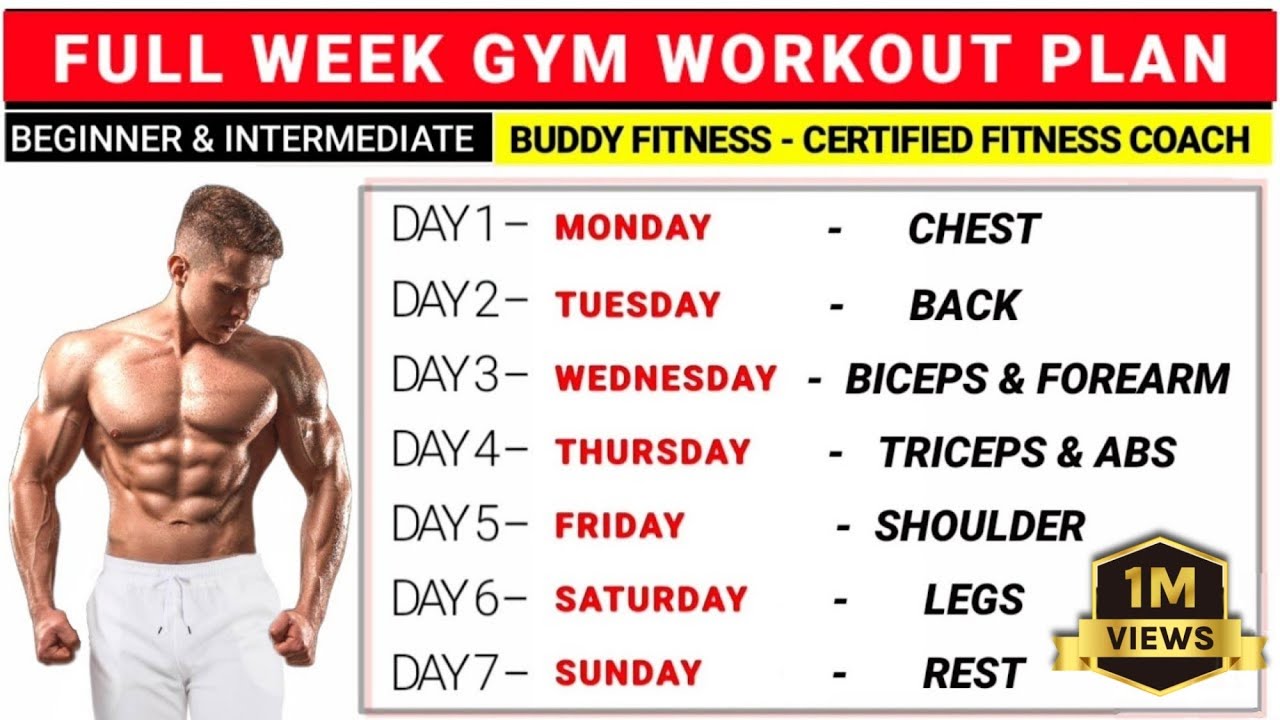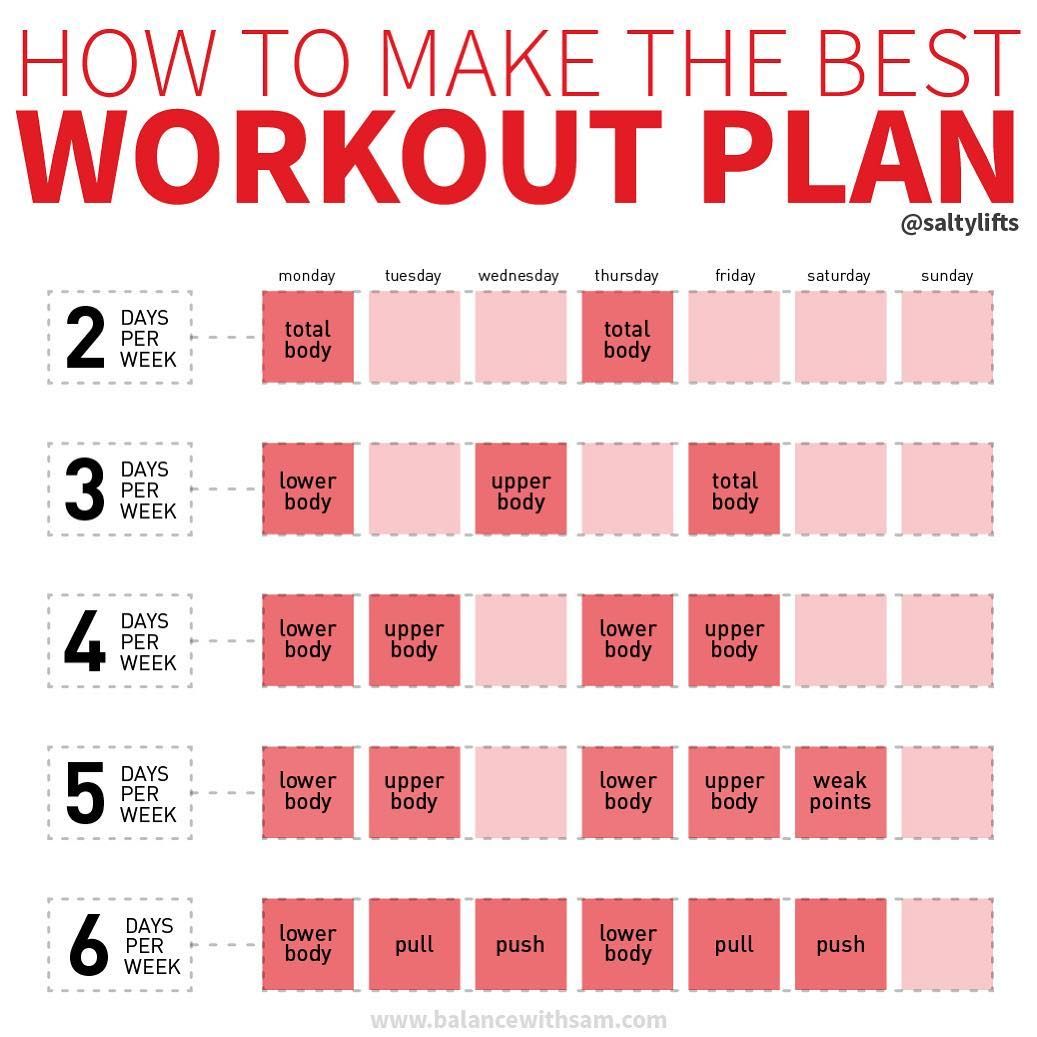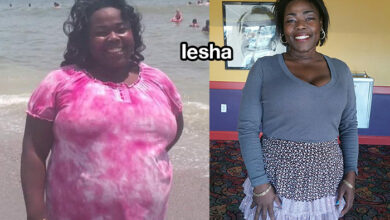
Fitness Basics Training Plans: Your Guide to Getting Started
Fitness Basics Training Plans: Ready to embark on your fitness journey but feeling overwhelmed? It’s understandable! Starting a fitness routine can seem daunting, but it doesn’t have to be. This guide will break down the essentials, helping you build a foundation for a healthier, stronger you.
We’ll explore the key principles of fitness, from exercise physiology to nutrition and rest, and then guide you through creating your own personalized training plan. Get ready to learn about different exercise types, setting realistic goals, and staying motivated along the way.
Whether you’re a complete beginner or looking to refresh your approach, this comprehensive guide has something for everyone.
Think of this as your roadmap to fitness success. We’ll cover everything from choosing the right exercises to fueling your body for optimal performance. You’ll gain a deeper understanding of how your body responds to exercise, how to prevent injuries, and how to stay consistent with your fitness goals.
So, let’s dive in and start building a healthier, more fulfilling you!
Understanding Fitness Basics

Embarking on a fitness journey can be both exciting and daunting. It’s essential to establish a solid foundation by understanding the fundamental principles that guide a healthy and effective fitness routine. This involves exploring the science behind exercise, the role of nutrition, and the importance of rest and recovery.
Exercise Physiology
Exercise physiology delves into the biological processes that occur during physical activity. It explains how our bodies adapt to exercise and how we can optimize our workouts for optimal results. Understanding the basic principles of exercise physiology is crucial for designing effective training plans.
This includes:
- Energy Systems:Our bodies utilize different energy systems depending on the intensity and duration of exercise. For example, during short bursts of high-intensity activity, like sprinting, our bodies primarily rely on the anaerobic system, which uses stored energy in the muscles.
For longer-duration, moderate-intensity activities, like jogging, the aerobic system becomes more dominant, using oxygen to produce energy.
- Adaptation:Our bodies adapt to exercise stress, becoming stronger and more efficient over time. This adaptation process, known as the principle of progressive overload, involves gradually increasing the demands placed on our muscles. By consistently challenging ourselves, we stimulate growth and improvement.
- Specificity:The principle of specificity emphasizes that exercise training should be tailored to the specific goals and needs of the individual. For example, a runner aiming to improve speed and endurance should focus on exercises that target these specific areas, such as interval training and long-distance runs.
Similarly, a weightlifter aiming to increase muscle mass should prioritize exercises that focus on strength and hypertrophy.
Types of Exercise
There are many different types of exercise, each offering unique benefits. Understanding the different categories can help you choose activities that align with your goals and preferences.
- Cardiovascular Exercise (Cardio):This type of exercise elevates your heart rate and improves your cardiovascular health. Examples include running, swimming, cycling, and dancing. Cardio helps improve endurance, burn calories, and reduce the risk of heart disease.
- Strength Training:Strength training focuses on building and maintaining muscle mass. It involves using resistance, such as weights, bodyweight, or resistance bands, to challenge your muscles. Strength training improves bone density, increases metabolism, and enhances overall strength and functional capacity.
- Flexibility Training:Flexibility training focuses on improving the range of motion in your joints. It helps prevent injuries, improve posture, and enhance overall mobility. Examples include stretching, yoga, and Pilates.
Setting Realistic Fitness Goals
Setting realistic fitness goals is essential for maintaining motivation and achieving long-term success. It’s important to consider your current fitness level, time constraints, and overall lifestyle when setting goals. It’s also crucial to make your goals specific, measurable, achievable, relevant, and time-bound (SMART).
For example, instead of setting a vague goal like “lose weight,” a more effective goal would be “lose 1-2 pounds per week for the next 12 weeks.”
Tracking Progress
Tracking your progress is an essential part of any fitness journey. It helps you stay motivated, identify areas for improvement, and celebrate your accomplishments.There are various ways to track your progress, including:
- Weight and Body Composition:Monitoring your weight and body composition can provide valuable insights into your progress. However, it’s important to remember that these metrics alone don’t tell the whole story. It’s also essential to consider how your clothes fit, how you feel physically, and your overall energy levels.
- Exercise Logs:Keeping a detailed log of your workouts can help you track your progress and identify areas for improvement. You can record the type of exercise, duration, intensity, and any other relevant information.
- Photos:Taking progress photos at regular intervals can help you visually track your progress. This can be a powerful motivator, especially when you start to see changes in your physique.
Creating a Training Plan
A well-structured training plan is crucial for achieving your fitness goals. It provides a roadmap to guide your workouts, ensuring consistency and progress.
Sample Training Plan for Beginners
This sample plan is designed for beginners who are new to exercise and looking to establish a healthy routine. Frequency:3-4 days per week, with rest days in between. Duration:30-45 minutes per session. Intensity:Moderate, focusing on building a solid foundation. Example Workout Routine:Day 1: Upper Body
Warm-up
Fitness basics training plans are all about consistency and progression. You’ll find that fueling your workouts with a balanced diet is key, and that’s where vegetables shine. Check out this article on 5 ways to up your vegetable game to find some delicious and creative ways to add more veggies to your meals.
With a solid nutrition plan, you’ll be able to power through your workouts and reach your fitness goals.
Workout
Fitness basics training plans are all about consistency and finding what works for you. A key element is nutrition, and sometimes that means making small adjustments to your diet. If you’re looking to cut calories, there are easy ways to cut up to 500 calories without feeling deprived.
Remember, a healthy diet combined with a consistent workout routine will help you reach your fitness goals.
Push-ups
3 sets of 8-12 repetitions.
Dumbbell rows
3 sets of 8-12 repetitions.
Overhead press
3 sets of 8-12 repetitions.
Bicep curls
3 sets of 10-15 repetitions.
Triceps extensions
3 sets of 10-15 repetitions.
Cool-down 5 minutes of stretching, focusing on major muscle groups. Day 2: Lower Body
Warm-up 5 minutes of light cardio, such as jumping jacks or high knees.
Workout
Squats
3 sets of 10-15 repetitions.
Lunges
3 sets of 10-15 repetitions per leg.
Calf raises
3 sets of 15-20 repetitions.
Hamstring curls
3 sets of 10-15 repetitions.
Cool-down 5 minutes of stretching, focusing on leg muscles. Day 3: Core and Cardio
Fitness basics training plans are all about finding the right balance – a balance between pushing yourself and recovering, between building muscle and burning fat. And just like in training, finding a balance in your diet is crucial. Learning strategies for eating in moderation can help you fuel your workouts effectively without sabotaging your progress.
By making mindful choices, you can support your fitness goals and enjoy a healthy, sustainable lifestyle.
Warm-up 5 minutes of light cardio, such as jumping jacks or burpees.
Workout
Plank
3 sets of 30-60 seconds hold.
Crunches
3 sets of 15-20 repetitions.
Bicycle crunches
3 sets of 15-20 repetitions.
Cardio of choice (running, cycling, swimming)
20-30 minutes.
Cool-down 5 minutes of stretching, focusing on core and back muscles. Day 4: RestDay 5: Repeat Day 1Day 6: Repeat Day 2Day 7: Rest
Workout Routines for Different Fitness Levels
- Beginner:Focus on basic exercises with lighter weights or resistance. Aim for 2-3 sets of 10-15 repetitions with a focus on proper form.
- Intermediate:Increase the intensity and duration of workouts. Use heavier weights, higher repetitions, and more challenging exercises.
- Advanced:Incorporate advanced exercises, heavier weights, and higher intensity training. Focus on compound movements and challenging variations.
Importance of Proper Warm-up and Cool-down Routines
- Warm-up:Prepares your body for exercise by increasing blood flow, heart rate, and muscle temperature. This reduces the risk of injury and improves performance.
- Cool-down:Helps your body recover from exercise by gradually decreasing heart rate and blood pressure. It also aids in muscle recovery and reduces soreness.
“A proper warm-up and cool-down routine is essential for maximizing workout benefits and minimizing injury risk.”
Nutrition for Fitness

Fueling your body with the right nutrients is crucial for achieving your fitness goals. Understanding the role of macronutrients, building a healthy meal plan, and staying hydrated are essential components of a successful fitness journey.
Macronutrients for Fitness
Macronutrients are the essential building blocks of our diet, providing energy and supporting various bodily functions. Understanding how each macronutrient contributes to fitness is vital for optimizing your diet.
- Protein: Protein is essential for muscle growth and repair. It plays a crucial role in building and maintaining lean muscle mass, which is essential for strength, power, and endurance. Aim for 0.8 grams of protein per kilogram of body weight daily.
Good sources include lean meats, poultry, fish, eggs, dairy products, beans, and lentils.
- Carbohydrates: Carbohydrates are the primary source of energy for our bodies. They provide the fuel needed for workouts and help replenish glycogen stores in muscles. Choose complex carbohydrates like whole grains, fruits, and vegetables over simple sugars.
Carbohydrate needs vary depending on activity level, but aim for 45-65% of your daily calorie intake.
- Fats: Fats are essential for hormone production, cell function, and energy storage. They also help with nutrient absorption and satiety. Focus on healthy fats like those found in avocados, nuts, seeds, olive oil, and fatty fish. Limit saturated and trans fats.
Creating a Healthy Meal Plan
A well-structured meal plan that aligns with your fitness goals is crucial for success. Consider the following tips:
- Plan Ahead: Plan your meals and snacks in advance to avoid impulsive, unhealthy choices. This can involve meal prepping or creating a weekly meal plan.
- Prioritize Whole Foods: Focus on consuming whole, unprocessed foods like fruits, vegetables, lean proteins, and whole grains. These foods are nutrient-dense and provide essential vitamins, minerals, and fiber.
- Control Portions: Be mindful of portion sizes to avoid overeating. Use smaller plates, measure out servings, and listen to your body’s hunger and fullness cues.
- Stay Hydrated: Water is essential for optimal performance and recovery. Drink plenty of water throughout the day, especially before, during, and after workouts.
Importance of Hydration
Hydration is crucial for overall health and performance. Water plays a vital role in regulating body temperature, transporting nutrients, and removing waste products. During exercise, our bodies lose fluids through sweat, leading to dehydration if not replenished adequately.
- Improved Performance: Dehydration can negatively impact athletic performance, leading to fatigue, decreased endurance, and impaired cognitive function. Staying hydrated helps maintain optimal performance levels.
- Reduced Risk of Injury: Dehydration can increase the risk of muscle cramps and injuries. Proper hydration helps maintain muscle function and flexibility, reducing the likelihood of injury.
- Faster Recovery: Hydration is essential for post-workout recovery. It helps replenish fluids lost through sweat and supports muscle repair and regeneration.
Safety and Injury Prevention

Fitness is an excellent way to improve your overall health and well-being, but it’s essential to prioritize safety to avoid injuries. Ignoring safety precautions can lead to setbacks and hinder your progress. This section focuses on common fitness injuries, their causes, and how to prevent them.
Common Fitness Injuries
Fitness injuries can range from minor aches to serious conditions that require medical attention. Some of the most common injuries include:
- Muscle strains: These occur when muscles are overstretched or torn. Common causes include improper form, sudden movements, and inadequate warm-up.
- Ligament sprains: Sprains happen when ligaments, which connect bones, are stretched or torn. They are often caused by sudden twisting or impact injuries.
- Tendonitis: This condition involves inflammation of tendons, which connect muscles to bones. It can be caused by overuse, repetitive motions, or improper form.
- Runner’s knee: This condition affects the kneecap and is commonly caused by overuse, improper footwear, or weak muscles around the knee.
- Back pain: Poor posture, weak core muscles, and improper lifting techniques can contribute to back pain.
Preventing Fitness Injuries
Preventing injuries is crucial for maintaining a consistent fitness routine. Here are some essential tips:
- Warm up properly: Before starting any exercise, dedicate time to warm up your muscles. This prepares your body for the physical demands and reduces the risk of strains and sprains.
- Use proper form: Focusing on proper form is essential. Incorrect form can strain joints and muscles, leading to injuries. Seek guidance from a qualified trainer or fitness professional to ensure you are performing exercises correctly.
- Gradual progression: Don’t push yourself too hard too quickly. Gradually increase the intensity, duration, and frequency of your workouts to allow your body to adapt. Sudden jumps in activity levels can lead to overuse injuries.
- Listen to your body: Pay attention to any pain or discomfort you experience during exercise. If something feels wrong, stop and rest. Ignoring pain signals can lead to more severe injuries.
- Cross-train: Incorporating different types of exercises into your routine helps to prevent overuse injuries by working different muscle groups and reducing stress on specific areas.
- Stay hydrated: Adequate hydration is crucial for muscle function and performance. Dehydration can increase the risk of muscle cramps and other injuries.
- Proper footwear: Wear shoes designed for your specific activity to provide adequate support and cushioning. Improper footwear can contribute to foot, ankle, and knee problems.
- Rest and recovery: Allow your body sufficient time to rest and recover between workouts. This helps prevent muscle fatigue and overuse injuries.
Seeking Professional Guidance
If you experience persistent pain or discomfort, it’s essential to consult a healthcare professional. They can diagnose any underlying conditions and recommend appropriate treatment options. A physical therapist can provide guidance on exercises and stretches to help you recover from injuries and prevent future ones.
Motivation and Consistency
The journey to achieving your fitness goals is not a sprint, but a marathon. It requires consistent effort and unwavering dedication. Staying motivated and consistent can be challenging, especially when faced with obstacles and setbacks. This section explores strategies for maintaining motivation and consistency, emphasizing the importance of realistic goal setting and celebrating milestones.
It also delves into overcoming common obstacles and setbacks to help you stay on track.
Setting Realistic Goals
Setting realistic goals is crucial for staying motivated and achieving long-term success. Unrealistic goals can lead to frustration and discouragement, making it difficult to maintain consistency. Instead of aiming for drastic changes overnight, focus on small, achievable steps that build momentum and create a sense of accomplishment.
- Start with small, incremental changes to your routine. Instead of trying to work out for an hour every day, begin with 15-20 minutes and gradually increase the duration and intensity as you progress.
- Focus on progress, not perfection. Celebrate every small victory, no matter how insignificant it may seem. This helps reinforce positive habits and keeps you motivated to continue.
- Break down large goals into smaller, manageable steps. This makes the journey seem less daunting and provides a sense of accomplishment as you tick off each milestone.
Celebrating Milestones, Fitness basics training plans
Celebrating milestones is an effective way to stay motivated and recognize your progress. When you achieve a goal, no matter how small, take time to acknowledge your accomplishment. This can be anything from treating yourself to a healthy meal to buying a new piece of workout gear.
- Track your progress and celebrate your achievements. Keep a journal, use a fitness tracker, or take progress photos to document your journey and highlight your accomplishments.
- Reward yourself for reaching milestones. This doesn’t have to be extravagant, but it should be something you enjoy and that motivates you to keep going.
- Share your successes with others. Sharing your progress with friends, family, or an online community can provide support and encouragement, and it can also help you stay accountable.
Overcoming Obstacles and Setbacks
Everyone experiences obstacles and setbacks on their fitness journey. It’s important to have a plan for dealing with these challenges and to remember that setbacks are a normal part of the process.
- Identify the root cause of the obstacle. Is it lack of time, motivation, or injury? Once you understand the source of the problem, you can develop a plan to address it.
- Adjust your goals or plan. Sometimes, you may need to make adjustments to your goals or plan to accommodate unforeseen circumstances. This is perfectly acceptable and shows that you are adaptable and willing to learn.
- Don’t give up. Setbacks are temporary, and they don’t have to derail your progress. Learn from your mistakes, adjust your approach, and get back on track.
Conclusive Thoughts: Fitness Basics Training Plans
Remember, fitness is a journey, not a destination. There will be ups and downs, but the key is to stay consistent and celebrate your progress. Embrace the challenges, learn from your experiences, and most importantly, enjoy the process.
As you gain knowledge and confidence, you’ll be empowered to make sustainable changes that positively impact your life. So, keep moving forward, stay curious, and remember, you’re capable of achieving amazing things!






